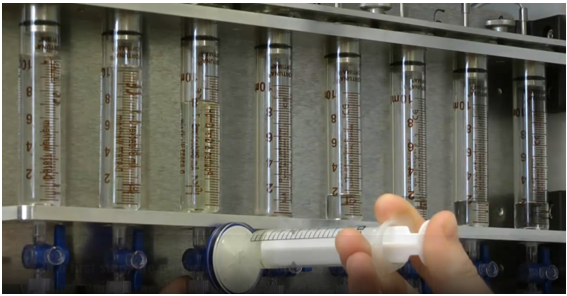- Home
-
Screening
- Ionic Screening Service
-
Ionic Screening Panel
- Ligand Gated Ion Channels
- Glycine Receptors
- 5-HT Receptors3
- Nicotinic Acetylcholine Receptors
- Ionotropic Glutamate-gated Receptors
- GABAa Receptors
- Cystic Fibrosis Transmembrane Conductance Regulators (CFTR)
- ATP gated P2X Channels
- Voltage-Gated Ion Channels
- Calcium Channels
- Chloride Channels
- Potassium Channels
- Sodium Channels
- ASICs
- TRP Channels
- Other Ion Channels
- Stable Cell Lines
- Cardiology
- Neurology
- Ophthalmology
-
Platform
-
Experiment Systems
- Xenopus Oocyte Screening Model
- Acute Isolated Cardiomyocytes
- Acute Dissociated Neurons
- Primary Cultured Neurons
- Cultured Neuronal Cell Lines
- iPSC-derived Cardiomyocytes/Neurons
- Acute/Cultured Organotypic Brain Slices
- Oxygen Glucose Deprivation Model
- 3D Cell Culture
- iPSC-derived Neurons
- Isolation and culture of neural stem/progenitor cells
- Animal Models
- Techinques
- Resource
- Equipment
-
Experiment Systems
- Order
- Careers
Laboratory Techniques in Electrophysiology
Electrophysiology
Measuring electrical currents passing through ion channels or changes in cell membrane potential, electrophysiology techniques are used to record the electrical activity of neurons, or evaluate compound cardiovascular safety. In brief, there are three fundamental types of electrophysiological probes that can measure activity in vivo:
Single electrodes. A single electrode can be inserted through an implanted chamber. These electrodes are often mounted onto a microdrive.
Multielectrode array. A multielectrode array is a grid of dozens of electrodes.
Tetrodes. A tetrode is a type of multielectrode array consisting of four active electrodes.
Laboratory Techniques

Voltage clamp technique is a great technique for studying electrical events occurring on cell membranes. It can be used to study the activity of all ion channels on the entire cell membrane or on a large part of cell membrane. However, since this technique requires two electrodes to be inserted into the cell, it does harm to the cell and is hard to be operated in small cells, so it is gradually replaced by patch clamp. The patch clamp technique was invented in 1976 by Neher and Sakmann, Max Planck Institute of Biophysical Chemistry, Germany. They firstly used two electrodes to clamp the membrane potential on frog muscle cells and recorded a single channel ion current activated by ACh.
Principle
By injecting a certain current into the cell, the ion current generated by the ion channel is offset, thereby fixing the cell membrane potential at a certain value. Since the injected current and the ion current are equal and opposite in direction, it can reflect the size and direction of the ion current. Two electrodes or single electrode can be used for voltage clamp recording. The patch clamp technology is a special voltage clamp technology that can record the current flowing through a single channel. It has four recording configurations: cell attachment recording, inside-out recording, outsideout recording and Whole cell recording.
Experimental Method
A glass pipette filled with electrolyte solution is tightly sealed on the cell membrane to electrically isolate the membrane. The current flowing through the channels in the patch therefore flows into the pipette and can be recorded by the electrodes connected to the high sensitivity differential amplifier. In the voltage clamp configuration, current is injected into the battery through a negative feedback loop to compensate for changes in membrane potential. Recording this current can draw conclusions about membrane conductance.
Equipments
- Electronic components: amplifier, computer interface, data acquisition and analysis system.
- Optical components and photoelectric interface: microscope,monitor, etc.
- Mechanical system: anti-vibration platform, etc.
- Auxiliary system: electrode puller, vibrating slicer, incubation tank,
- Perfusion system, etc.
Applications
Application Example: Two-photon Targeted Patch Clamp Technology
By constructing a specifically expressed fluorescent marker in the target neuron of animal brain and adding a fluorescent agent to the electrode fluid, using a water-immersed fluorescence microscope to lock the specifically expressed fluorescent marker in the neuron and the fluorescence in the glass electrode. Under visual conditions, whole-cell recording of neurons is performed.
Application Direction
- In pharmacological research, automatic patch clamps are used to screen effective substances for ion channel modification.
- Study cell signal transduction and cell secretion mechanisms.
- Combined with molecular cloning and site-directed mutagenesis technology, patch clamp technology can be used to study the relationship between ion channel molecular structure and biological function.
- The patch clamp technique can also be used to analyze the site of action of drugs on their target receptors. Including the affinity of the receptor with its agonists and antagonists, the dynamic characteristics of ion channel opening and closing, and receptor desensitization.
References
- Wilson W A , Goldner M M . Voltage clamping with a single microelectrode[J]. Journal of Neurobiology, 1975.
- Sakmann B , Neher E . Patch Clamp Techniques for Studying Ionic Channels in Excitable Membranes[J]. Annual Review of Physiology, 2003, 46(1):455-472.
- Margrie T W , Meyer A H , Caputi A , et al. Targeted Whole-Cell Recordings in the Mammalian Brain In Vivo[J]. Neuron, 2003, 39(6):911-918.
Related Section
Inquiry

